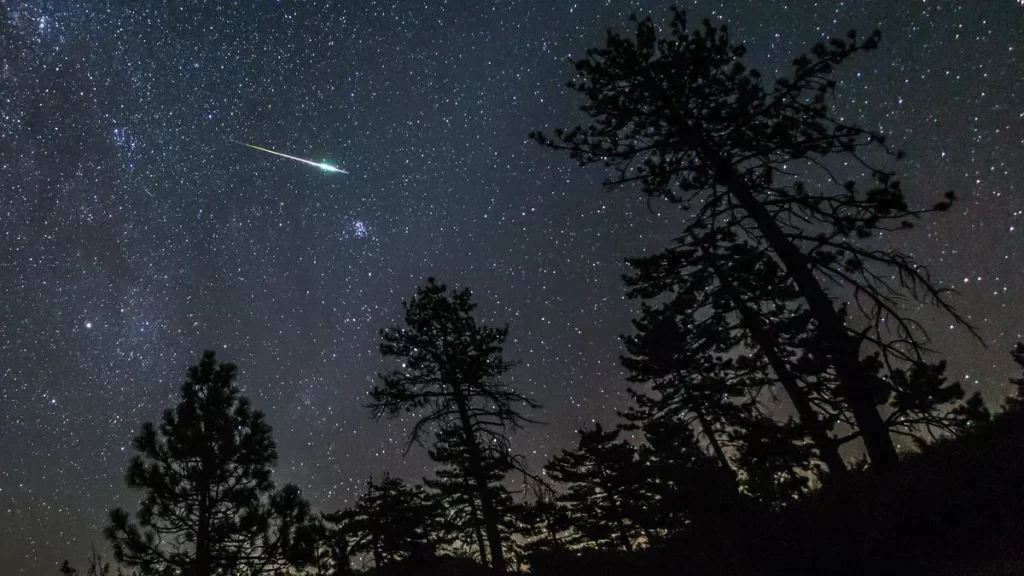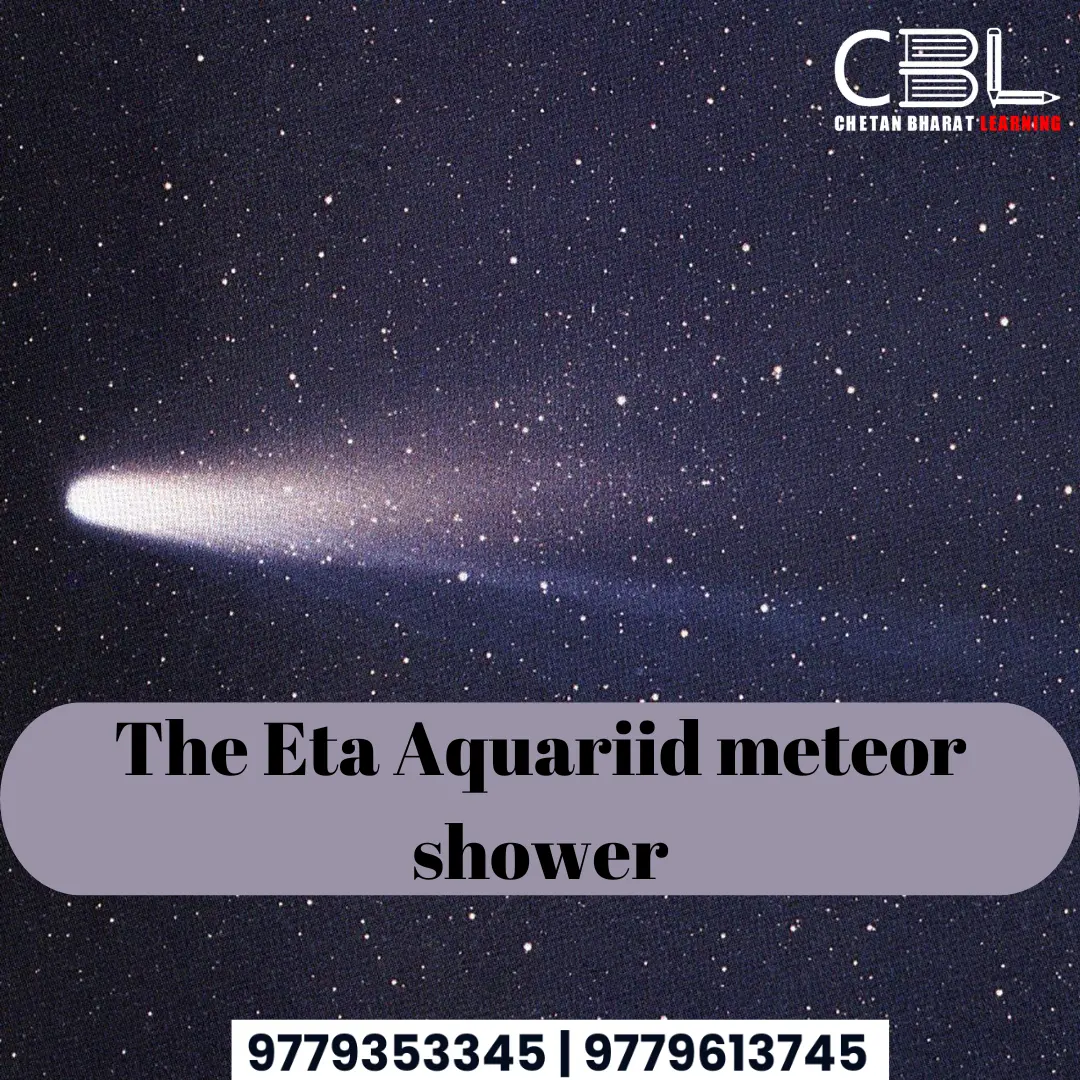Why in the news?
- The Eta Aquariid meteor shower, ongoing since April 15, will reach its peak on May 5 and 6.
- Consists of fiery remnants that hurtle through space at speeds of approximately 66 kilometres per second (237,000 kilometres per hour).
- These celestial displays occur annually in May.
- They are most prominently observed in the Southern Hemisphere, particularly in countries like Indonesia and Australia.

Why are Eta Aquariids unique?
- The Eta Aquariid meteor shower is renowned for its high speed. Thus, resulting in long-lasting glowing tails that can persist for several minutes.
- NASA reports that during the peak of the meteor shower, observers in the Southern Hemisphere can expect to see around 30 to 40 Eta Aquarid meteors per hour, whereas in the Northern Hemisphere, this number decreases to approximately 10 meteors per hour.
- Discrepancies in meteor visibility between the hemispheres are attributed to the radiant, the point in the sky from which the meteor shower appears to originate.
- In the Northern Hemisphere, Eta Aquarid meteors often manifest as “Earthgrazers,” elongated meteors that appear to skim the Earth’s surface. Conversely, in the Southern Hemisphere, they are visible higher in the sky, resulting in greater visibility.
Comets- origin of meteor showers
- Meteor showers originate from comets, which are icy remnants from the formation of the solar system around 4.6 billion years ago.
- Comets consist of a mixture of dust, rock, and ice and follow highly elliptical orbits around the Sun, sometimes taking hundreds of thousands of years to complete a single orbit.
- NASA has identified 3,910 comets to date, but there are believed to be billions more orbiting the Sun, particularly in the Kuiper Belt and Oort cloud beyond Neptune.
- Comets vary in size, with most being approximately 10 kilometres wide.
- When comets approach the Sun, they heat up and release gases and dust, forming a glowing head that can exceed the size of a planet.
- This material also forms a tail extending millions of miles into space.
How are meteor showers related to comets?
- Meteors are small particles of dust or rock that burn up upon entering Earth’s atmosphere, creating a brief tail of light.
- Due to their small size, most meteors, often the size of a grain of sand, completely disintegrate in the atmosphere. However, occasionally larger meteors, called meteorites upon impact, can survive and strike the ground, causing significant damage.
- Meteor showers occur when Earth passes through clouds of dust left behind in the orbital path of a comet. During these events, the sky is illuminated by both small and large meteor tails as comet debris interacts with Earth’s atmosphere.
- The Eta Aquariid meteor shower is a result of Earth crossing the orbital plane of Halley’s Comet, which completes an orbit around the Sun approximately every 76 years.
- Observations of Halley’s Comet date back to 240 BCE. It was in 1705 that astronomer Edmond Halley realized these observations corresponded to periodic returns of the same comet.
- Halley’s Comet was last seen in 1986 and is projected to re-enter the inner solar system in 2061. Additionally, the Orionids meteor shower, also caused by Halley’s Comet, occurs annually in October.
How to watcht he Eta Aquariid meteor shower?
- The meteor shower is anticipated to be observable across the entire sky. Its apparent source can be traced back to the Aquarius constellation, hence its name ‘Eta Aquariid.’
- Clear night skies devoid of excessive light pollution are conducive to viewing the meteor shower with the naked eye.
- Even with minimal equipment, such as a basic telescope, the likelihood of witnessing this nocturnal event is greatly enhanced.


Leave a Reply
You must be logged in to post a comment.